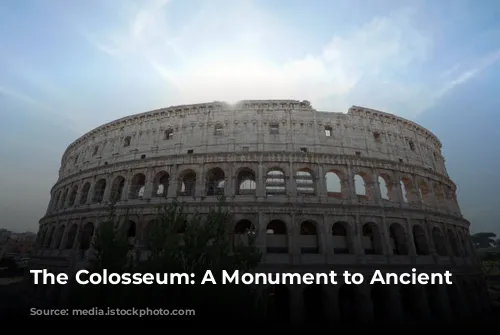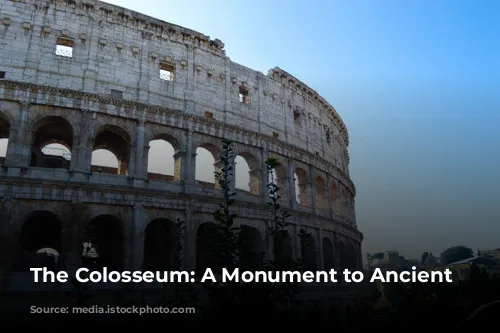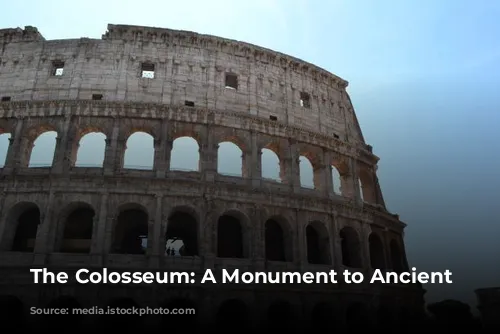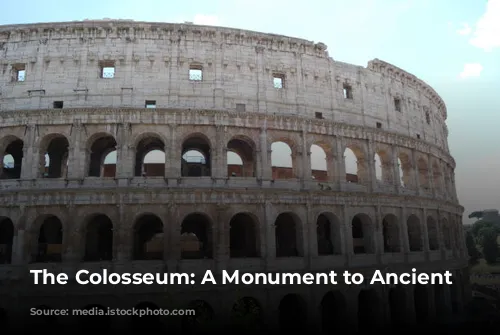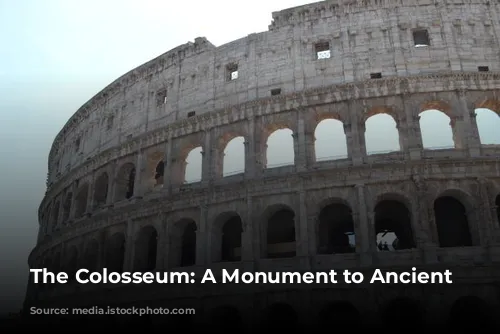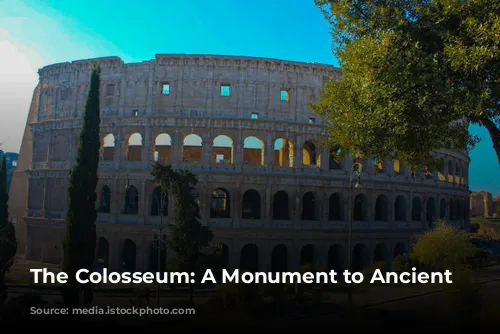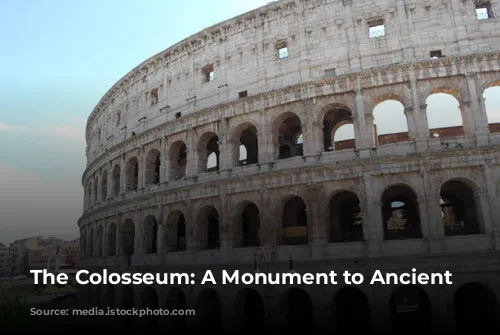The Colosseum, also known as the Flavian Amphitheatre, is a colossal structure that stands as a testament to the grandeur of the Roman Empire. Built by Emperor Vespasian of the Flavia family and inaugurated by his son Titus in 80 AD, this magnificent amphitheatre remains one of the most iconic landmarks in Rome and the world.
A Spectacle of the Senses
The Colosseum’s opening ceremony was a spectacle of lavish proportions, lasting an astounding one hundred days. During this time, crowds were treated to gladiator fights, animal hunts, and elaborate shows, some even featuring naumachiae, real sea battles recreating past naval engagements. Imagine the thrill and wonder as thousands of animals were brought into the arena, the roaring crowds, and the spectacle of water filling the space for these incredible sea battles.
A Name for the Ages
The name “Colosseum” originated from the massive statue of Emperor Nero, known as “the Colossus,” which stood 35 meters tall near the amphitheatre. While the statue is no longer standing, its name and legacy live on through the Colosseum. The famous medieval monk Venerable Bede even prophesied that “Rome will exist as long as the Colosseum does; when the Colosseum falls so will Rome; when Rome falls so will the world.” This prophecy, based on the Colosseum’s prominence, speaks volumes about its impact on history and culture.
A Masterpiece of Engineering
The Colosseum is a marvel of Roman engineering, a testament to their skill and innovation. The Romans used arches, a key element in their architectural designs, to distribute the weight of the massive structure, much like the arches used in Roman aqueducts. Imagine the sheer scale of this structure, built in less than ten years using a technique that allowed them to distribute the weight of its enormous construction effectively.
A Colossal Skeleton
While today, the Colosseum stands as a skeleton of its former glory, its grandeur is undeniable. The outer wall, once adorned with magnificent travertine stone slabs, has lost much of its original form over time. During the Middle Ages, the Colosseum was used as a quarry for building materials, with its stone, lead, and iron being used for projects like Barberini Palace, Piazza Venezia, and even St. Peter’s Basilica. The remnants of this quarrying are visible today in the form of holes in the columns, a stark reminder of the Colosseum’s repurposing and the enduring legacy of its materials.
A Place for Spectacle and Social Hierarchy
The Colosseum was designed to accommodate up to 70,000 spectators, offering everyone a perfect view of the action. Social hierarchy was meticulously reflected in seating arrangements, with the commoners at the top, men and women separated, and the most elite citizens, including senators, vestals, priests, and the emperor, sitting in the front row. Imagine the energy of this vast crowd, cheering on their favorites, experiencing the thrill of the games, and witnessing the rise and fall of gladiators.
A Roof of Innovation
Just like modern stadiums, the Colosseum had an ingenious roof system, the “Velarium,” to protect spectators from the sun. This enormous linen tarpaulin was supported by ropes, winches, and wooden poles, and it took a crew of 100 sailors from the Imperial fleet to maneuver it. Imagine the coordinated movements of these sailors, working in perfect harmony to the beat of a drum, adjusting the Velarium to provide shade for the eager audience.
The Gladiators: Heroes and Entertainers
The arena, once covered with a mixture of brick and wood, is now gone, revealing the cellars below, where equipment was stored and used to create spectacular effects. Lifts and hoists, still visible today, were used to bring animals and gladiators up through trapdoors, surprising the audience with their sudden appearance in bursts of white dust.
These spectacular shows were not just entertainment but also a form of symbolism, connecting citizens with their leader through shared experiences. They provided a much-needed distraction from political problems and offered a spectacle that captivated the hearts and minds of the Roman populace.
The Colosseum: A Stage for Diverse Spectacles
The Colosseum hosted a variety of shows, each with its unique appeal. “Venationes,” hunts involving exotic animals, were popular morning entertainment. The sheer spectacle of these hunts, sometimes involving the “Silvae,” where forests were recreated in the arena, must have been awe-inspiring.
The gladiators, however, were the ultimate stars. Imagine the thunderous roar of the crowd, the blaring trumpets, and the beating of drums as gladiators marched into the arena, greeted like heroes by their fans. These gladiators, often prisoners of war or those seeking fame and riches, were trained in various fighting styles. Their battles were a spectacle of strength, skill, and drama, culminating in the emperor’s decision, thumbs up for mercy, thumbs down for death.
The legacy of the Colosseum extends beyond its physical presence. It remains a symbol of Roman power and grandeur, a testament to the creativity and ingenuity of its creators, and a reminder of the diverse and sometimes brutal spectacles that captivated the ancient world. Its enduring popularity with visitors from around the globe ensures that the Colosseum will continue to inspire awe and wonder for generations to come.
